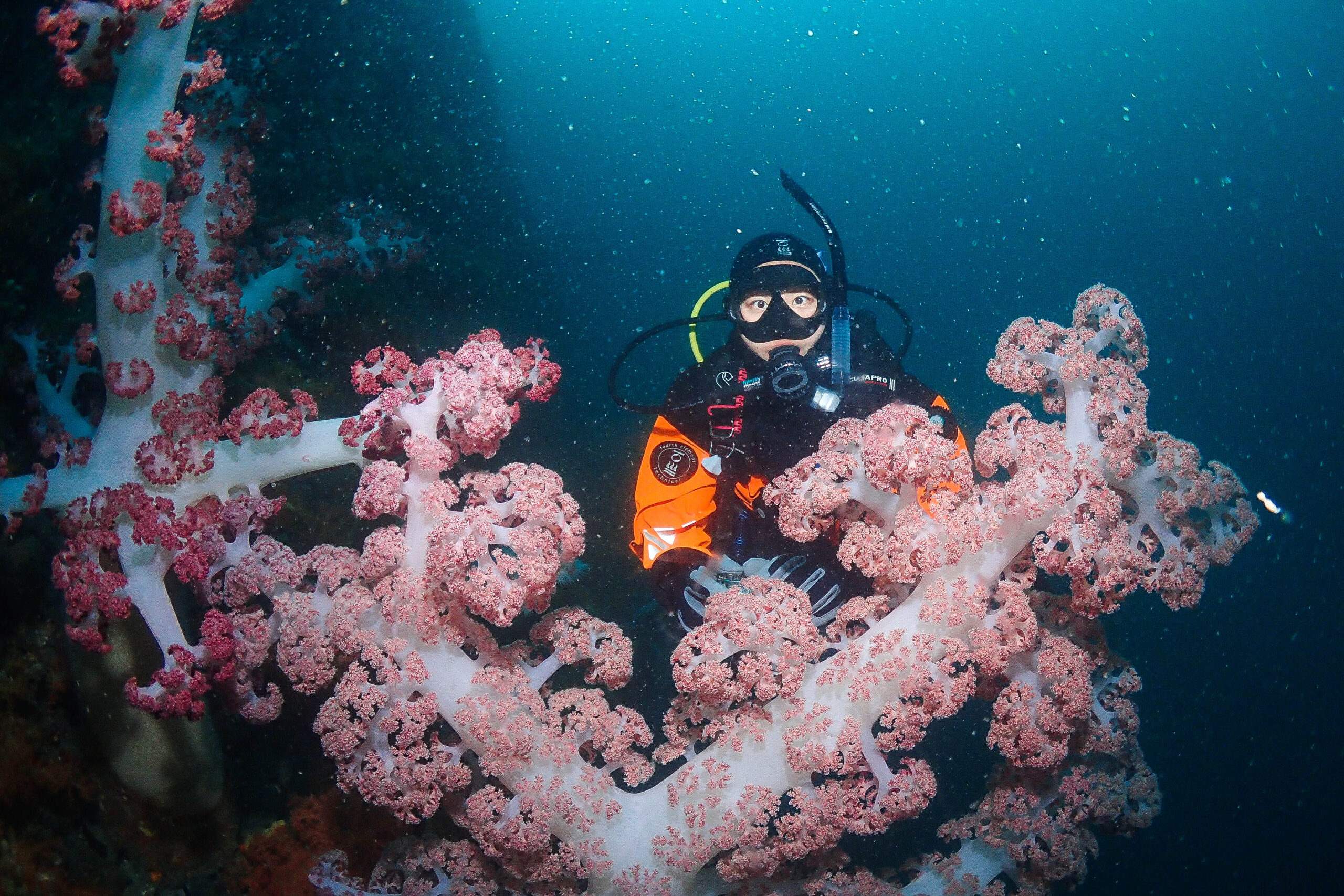As a scuba diving instructor, I have spent countless hours exploring the underwater world. Recently I have started taking classes to deepen my understanding of marine ecosystems. What has struck me most during this time is how interconnected everything is beneath the surface.
From the vibrant coral reefs of tropical seas to the wavy fields of seagrass meadows, I have always described the underwater world as magical. The underwater world is not only a breathtaking place to behold, but also one of the cornerstones of life on Earth.

Coral Reefs Rainforests Beneath the Waves
Coral reefs are rightly called the “rainforests of the sea”. Although they cover less than 1% of the ocean floor, they shelter more than 25% of all marine species. This is an incredible biodiversity. From fish to molluscs, crustaceans to turtles, these ecosystems form a center of life intertwined with dependence and complexity.
Reefs also act as natural barriers, protecting coastlines from storms and erosion. They sustain local economies through tourism and fisheries, providing food and income for millions of people around the world. On a global scale, coral reefs contribute to the carbon cycle, helping to regulate climate.

The Role of Nutrients in Marine Ecosystems
Marine ecosystems such as coral reefs thrive in environments where nutrients are surprisingly low. These are called oligotrophic waters. The reason for this development lies in their efficiency. Symbiotic relationships and special adaptations allow organisms like corals to recycle nutrients efficiently. For example, coral polyps work together with the symbiotic algae zooxanthellae to provide energy through photosynthesis. In turn, corals provide nitrogen and other nutrients to the algae.
However, the balance is delicate. Excess nutrients, especially nitrogen and phosphorus, disrupt these finely tuned systems. When there is too much nitrogen in the water – often from agricultural runoff or untreated sewage – it can fuel the growth of algae and harmful microorganisms. These blooms smother corals, which in turn can reduce the impact of sunlight and lower oxygen levels, a process known as eutrophication.

Nitrogen: A Double-edged Sword
Nitrogen is essential for life. It is the building block of proteins, DNA and chlorophyll. It is present in the ocean in various forms, such as ammonium and nitrate, and supports the growth of primary producers such as phytoplankton and seagrasses. But in excess, nitrogen becomes a major pollutant.
Runoff from farms, urban areas and wastewater treatment plants often carries high levels of nitrogen into the ocean. This has led to alarming consequences worldwide.
Coral Bleaching: High nutrient levels stress coral reefs, making them more prone to bleaching. When corals are stressed, they expel their symbiotic algae, turn white and lose their primary energy source. Algae Overgrowth: Excess nitrogen encourages algal growth, which competes with corals for space and sunlight. Once algae become dominant, they create an environment where coral recovery becomes almost impossible. Dead Zones: Excess nutrients can create areas of reduced oxygen, known as hypoxic zones, where most marine life cannot survive. These “dead zones” are becoming increasingly frequent and common.

A Diver’s Perspective
As divers, we see the changes first-hand. A reef that was vibrant a few years ago may now be covered in algae or suffering from bleaching. Reduced visibility, declining fish populations and the proliferation of dead corals are all signs of a reef in trouble. These changes are not only environmental concerns but also affect the livelihoods of those who depend on marine tourism.
Taking courses and increasing my reading on these topics has changed the way I approach my role as a dive instructor. I now assign new tasks to my divers beyond teaching skills and safety. I encourage divers to participate in conservation efforts, support environmentally friendly dive operators and advocate for sustainable practices on land.
Looking Ahead The beauty of marine ecosystems lies not only in their visual appeal, but also in their resilience. If given the chance, reefs and seagrass meadows can recover. Initiatives to reduce nitrogen pollution, restore habitats and promote sustainable tourism are already yielding results in places like Tampa Bay, Florida and the Maldives.
In future articles, I will delve deeper into nitrogen’s dual role as friend and foe of the ocean, and try to convey actionable ways we as a global community can reduce its harmful effects. By sharing what I have learned, I hope to inspire others to protect the underwater world that gives us so much.











